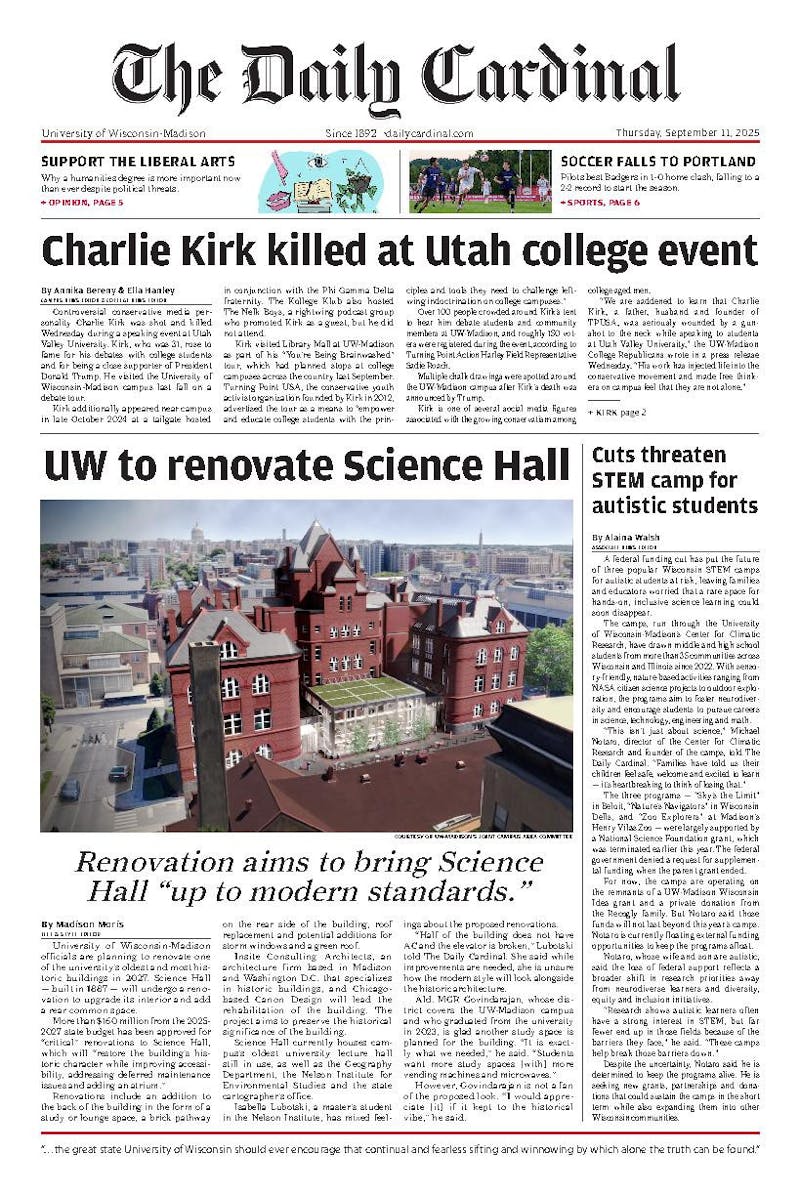As tuition prices increase and job outlooks waver, UW System students have begun favoring two-year degree programs more than four-year universities.
At Madison Area Technical College, there is a focus on teaching skills that are necessary to succeed in the modern workforce.
“[The curriculum is focused] not so much on theory and philosophy, but what you need to know to get to work,” said Brian Landers, the chair of the Criminal Justice Department at MATC.
Landers noted the ability of a technical college to aid students in following their desired career path, while also being a stepping stone to pursuing further schooling.
In 2017, students who have a vocational associate's degree made an average of $18.65. Earning a bachelor’s degree is nearly an $8 increase per hour. However, there is a strenuous fight for technical schools guaranteeing that money should not be the primary concern.
Appeals of two-year degrees for students are shorter programs, centralized focus on a specific program and a lower tuition.
“Limited increases in state financial aid does not help to address students’ and parents’ perceptions of college costs,” said Noel Radomski, director and associate researcher at the Wisconsin Center for the Advancement of Postsecondary Education. “It is becoming more likely that the focus on affordability may be at the expense of academic quality.”
This may also serve as a consequence of the 2015 Walker administration budget cuts, which took $300 million in state funds from academic programs, according to Radomski.
“Six years of budget cuts to the UW System campuses, especially regional universities, such as UW-Stevens Point, UW-Parkside and especially the formerly-called UW Colleges may have encouraged prospective students and their parents to pursue other post-secondary education options,” Radomski said.
After concerns for the value of higher education began gaining traction, the UW System continued to push forward to avoid cutting programs. This played a significant role in the UW System restructuring, which consolidated 13 two-year colleges into the seven universities.
The goal of the merger was to provide students with an opportunity to remain at the campus of their choosing with the option of more learning resources and course options.
“The UW System is committed to helping improve student success by expanding the use of predictive analytics, intensive advising and other practices that provide timely support to students,” UW System Spokesperson Heather LaRoi said. “[It is] working to improve and simplify the transfer process, which will help more students to complete their degrees.”
Radomski said retaining and encouraging students to enroll at UW-Madison can be done through increasing state and campus financial aid services, advisory boards for academic departments and increasing the amount of online courses and degrees.
Gene Dalhoff, vice president of Talent and Education of the Madison Regional Economic Partnership, noted the knowledge of college programs that students receive prior to college is detrimental to deciding whether they would rather join the workforce or further their education.
“I do believe that within many of our school districts there is an increasing effort to expose individual students to post-secondary education and career opportunities that may be a better fit for them,” Dalhoff said.
He stated the concern is not on whether students are going to college, but picking the program that suits their career interests best.
“I believe an increasing number of students, and in many cases their parents as well, are beginning to realize that a four-year institution is not a good fit for everyone and that many jobs with family-supporting wages can be acquired with a two-year degree,” Dalhoff said.






